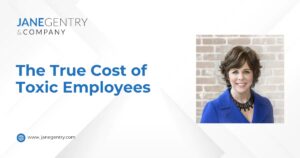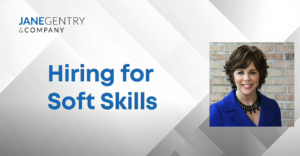the agile approach to business strategy & innovation

continuous innovation is king
Seth Makowsky, a mindset coach, teaches athletes how to use chess principles to gain crucial seconds in a game. He helps them learn what matters most–the King–and how to protect the king while anticipating future opportunities, detecting hidden dangers, and making fast and smart choices with that data. In a marketplace where your product/service and your ability to innovate are King, this is a valuable metaphor for business leaders.
How to Stay agile in today's business landscape
The days of producing a mediocre product/service and leveraging a powerful marketing engine to overcome deficiencies are over. Today’s buyer demands high quality and innovation. This has changed what strategy means to a business leader.
Businesses can no longer afford to have 5- or 10-year strategies, the market changes too quickly.
Now, strategy is like building the plane while you are flying it. It requires continuous innovation, listening to the marketing and adjusting.
To use Makowsky’s metaphor, it means understanding what is most important to your business (the King), grasping the opportunities to innovate and differentiate, and protecting your business from potential threats with an eye toward consistent plays rather than the entire game. What could this look like for your business?
1. Clear Vision Casting
All decisions about strategy should align with the vision for where the company is headed. Leadership must have clarity and agreement about the future goals of the organization. As importantly, to create organizational alignment, all employees should understand the vision and their role in helping the organization reach it.
2. Have a Process for Choosing Opportunities and Protecting from Threats
Without a process for vetting opportunities and threats quickly, innovation slows. Make decisions on opportunities quickly be asking things such as:
For Opportunities –
Does this align with our vision?
Too many leaders have ‘shiny object syndrome’ chasing the latest great thing that doesn’t align with the overall vision for the organization. This is a waste of time, resources, and employee energy. All decisions in the organization should be made against the overall corporate vision.
Does this play to our superpower?
Your superpower is not what you do, but what your company is great at – your knowledge or skills. I ran an experiential staffing firm for a period of time. Our superpower wasn’t staffing per se, but rather managing the logistics and talents of people nationwide. This served us during COVID when we couldn’t staff for our typical clients but shifted to doing COVID testing.
Do we have the infrastructure to support this move, or can we ramp it quickly?
This is where continuous innovation comes in, can you leverage your existing infrastructure to aid in the new initiative?
Is this innovative enough to make a difference?
You may find an opportunity that is innovative, but is it innovative enough to differentiate you? If not, is it an opportunity to remove an existing roadblock to production or service in your existing strategy? If the answer to both is no, perhaps you should move on.
For Threats –
Is this a threat that will materially affect our position in the market?
We can sometimes be so focused on what is happening inside our organization that we notice major changes to the market too late. A client of mine who served traditional TV media waited too long to adjust the strategy to meet the digital disruption in the space. Another missed the trend of their distribution channel, their largest client segment, moving to private label. Many leaders see the trends but wait too long to course correct.
Will this impact our ability to serve our clients?
The supply chain disruption during COVID caused many companies to stall in delivering to their clients. Those who moved quickly were able to fill the gap, the rest suffered until long after COVID was over. Seeing changes to supply chain, financing, and other areas that impact delivery, and innovating quickly is an example of building the plane while you are flying it.
3. Empower your Team to Innovate
A culture that rewards innovative thinking and puts process toward it not only gets ahead in the market, but also has a more engaged and productive workforce. Employees thrive when they –
- are clear on the Vision
- have some autonomy in contributing to the Vision
- know their role in getting the company closer to the Vision
Have an internal mechanism that garners feedback and ideas from employees, especially client-facing employees.
A salesperson recently told the CEO of his organization and a client of mine, “Customers hate those colors on our new product line”. She asked if he had shared that with anyone in product development and he told her that it hadn’t occurred to him.
Foster innovation by creating intentionality around it in your organization.
4. Listen Actively
Create a real-time feedback loop with your clients. The example of the salesperson who knew that clients hated the new product colors but did nothing with the information is a symptom of an organization without an effective feedback loop to their client base.
Have multiple mechanisms for ‘hearing’ from your clients. This might include regular meetings with client-facing employees, quarterly business reviews with your top clients to hear about the issues they are facing and what they see in the marketplace, or a social forum where you can engage with clients in real-time.
Your client will experience market changes before you see them. A feedback loop will enable you to quickly assess opportunities and threats and give you the intel to seed your next innovation.
5. Evaluate and Repeat
Fail Faster, Succeed Sooner
David Kelley, founder of IDEO
The adage from David Kelley, founder of IDEO, “Fail faster, succeed sooner” is a core axiom in the field of innovation design and the new normal for companies who wish to win in today’s marketplace.
As you address opportunities and threats, move on quickly from what isn’t working and invest quickly in what is. The most innovative organizations know that failing is not a negative, but rather gets you information to seed your next innovation.
the key to agile business strategy: continuous innovation
To succeed in today’s market, leaders must be hyper-focused on developing a quality product/service and continuous innovation. This requires internal mechanisms for seeing, rewarding, and testing opportunities as well as seeing and adjusting quickly to threats.
Leaders who realize that failing quickly can lead to the next innovation will be those who guide their businesses to differentiation in the market. Strategy today means knowing what is most important to protect (your King) and simultaneously seeing and adjusting to opportunities and threats. It means having an overarching goal and realizing that getting to that goal will require a series of ‘plays’ that may need adjusting along the way.
Perhaps we should all take up Chess. That ability to think a second or two faster may make all the difference.
Download Article Highlights
Looking for the short and sweet version? Download our article recap slides covering the main points and highlights.



